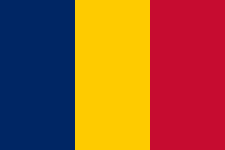Difference between revisions of "Language/Chadian-arabic/Grammar/Nouns"
m (Quick edit) |
m (Quick edit) |
||
| Line 103: | Line 103: | ||
|description=In this lesson, you will learn about Chadian Arabic nouns, including gender, number, plural, and colors. Improve your Chadian Arabic grammar skills with Polyglot Club! | |description=In this lesson, you will learn about Chadian Arabic nouns, including gender, number, plural, and colors. Improve your Chadian Arabic grammar skills with Polyglot Club! | ||
}} | }} | ||
==Related Lessons== | |||
* [[Language/Chadian-arabic/Grammar/Adjectives|Adjectives]] | |||
* [[Language/Chadian-arabic/Grammar/Pronouns|Pronouns]] | |||
* [[Language/Chadian-arabic/Grammar/Conditional-Mood|Conditional Mood]] | |||
* [[Language/Chadian-arabic/Grammar/Questions|Questions]] | |||
* [[Language/Chadian-arabic/Grammar/Negation|Negation]] | |||
* [[Language/Chadian-arabic/Grammar/How-to-Use-Be|How to Use Be]] | |||
* [[Language/Chadian-arabic/Grammar/How-to-Use-Have|How to Use Have]] | |||
* [[Language/Chadian-arabic/Grammar/Future-Tense|Future Tense]] | |||
* [[Language/Chadian-arabic/Grammar/Give-your-Opinion|Give your Opinion]] | |||
{{Chadian-arabic-Page-Bottom}} | {{Chadian-arabic-Page-Bottom}} | ||
Revision as of 12:36, 6 March 2023
Hi Chadian Arabic learners! 😊
In this lesson, we will focus on Chadian Arabic nouns, one of the most important parts of speech in any language.
Introduction
In Chadian Arabic, a noun is referred to as "ism" or "اسم". Nouns are used to describe or identify a person, place, thing, or idea. They can be singular or plural, and they can also have gender.
For example: ماء ("maa'") means "water". It's a singular noun, with no plural form in Chadian Arabic.
Gender
Unlike English, which has only two pronouns to define gender (he/she), Chadian Arabic has a masculine and feminine form of nouns. To form the feminine form of a noun, the letter "t" is added to the end of the noun.
For example: بيت ("bayt") means "house", while بيتة (bayta) means "female house".
Let's see more examples in the table below:
| Chadian Arabic | Pronunciation | English |
|---|---|---|
| رجل | رِجْل | man (masculine) |
| رِجْلَة | رِجْلـَة | woman (feminine) |
| قلم | قَلَم | pen (masculine) |
| قَلَمَة | قَلَمـَة | pen (feminine) |
| كِتَاب | كِتَاب | book (masculine) |
| كِتَابَة | كِتَابَة | book (feminine) |
Number
In English, we add an "s" to the end of a noun to form the plural form of that noun. Chadian Arabic handles plurals differently. To form the plural of a noun, we add the letter "ين" or "ات" at the end of the noun. The use of "ين" or "ات" depends on the gender of the noun. This can be confusing at first, but practice makes perfect!
For example: كتاب (kitab) means "book", while كتب (kutub) means "books".
Here are more examples:
| Chadian Arabic | Pronunciation | English |
|---|---|---|
| كِرَسِي | كِرَاسِي | chair(s) (masculine) |
| حِذَاء | حِذَاءات | shoe(s) (masculine) |
| كُلَب | كِلاب | dog(s) (masculine) |
| طَالِب | طُلَّاب | student(s) (masculine) |
| خَبِير | خَبَرَاء | expert(s) (masculine) |
| فِرَاشَة | فِرَاشَات | butterfly/-ies (feminine) |
Forming a sentence with nouns
Let's create a dialogue so you can practice using Chadian Arabic nouns in context:
- Person 1: اشْتَرَيْتِ كِتَابًا جَدِيدًا؟ (Ash-ta-rai-ti ki-ta-ban ja-di-dan?) (Did you buy a new book?)
- Person 2: نَعَمْ، اشْتَرَيْتُ كِتَابَةً جَدِيدَةً. (Na'am, ash-ta-ray-tu ki-ta-ba-tan ja-di-da-tan.) (Yes, I bought a new book.)
Plural forms of colors
In Chadian Arabic, the plural form of a noun is used to describe the color rather than adding a separate word for plural.
For example: the word لَوْن ("lawm") means "color" or "paint". When you want to describe something as red, instead of saying "red color" you would say "the color red". So, "red paint" would be لونْ أحْمَرْ (lawm aHmar).
Here are more examples:
| Chadian Arabic | Pronunciation | English |
|---|---|---|
| لَوْن أَحْمَر | lawm aHmar | red |
| لَوْن أَزْرَق | lawm azraq | blue |
| لَوْنَة أَخْضَر | lawma-t akhDar | green |
Conclusion
In conclusion, learning Chadian Arabic nouns is essential for beginners who want to communicate in Chadian Arabic. Gender and number have a significant impact on the formation of Chadian Arabic nouns, and plurals of colors are expressed using the plural form of the noun. To improve your Chadian Arabic grammar skills, you can also use the Polyglot Club website. Find native speakers and ask them any questions! Don't forget to check out the Polyglot Club Chadian Arabic grammar section for more useful resources!
➡ If you have any questions, please ask them in the comments section below.
➡ Feel free to edit this wiki page if you think it can be improved. 😎
Sources
